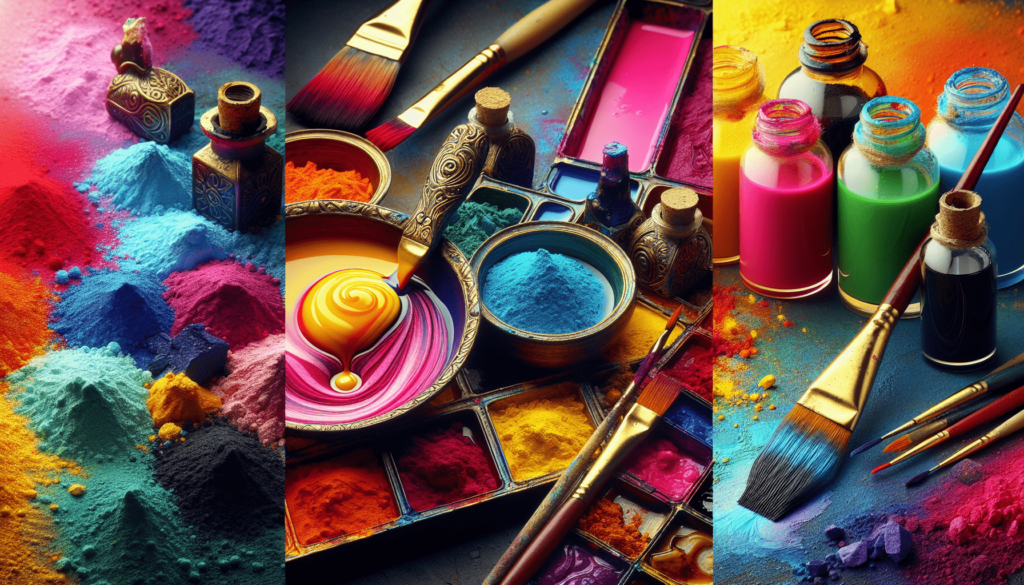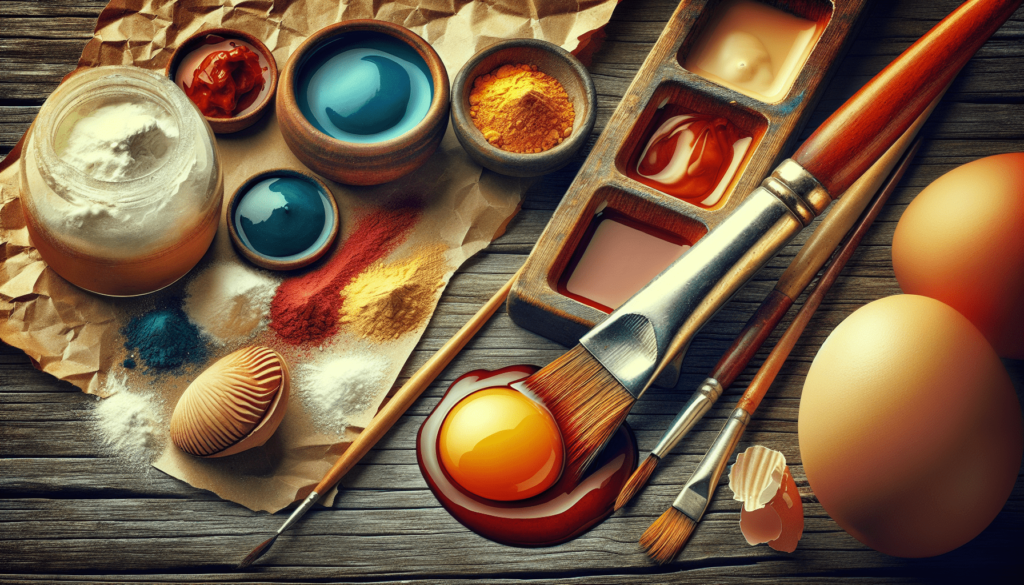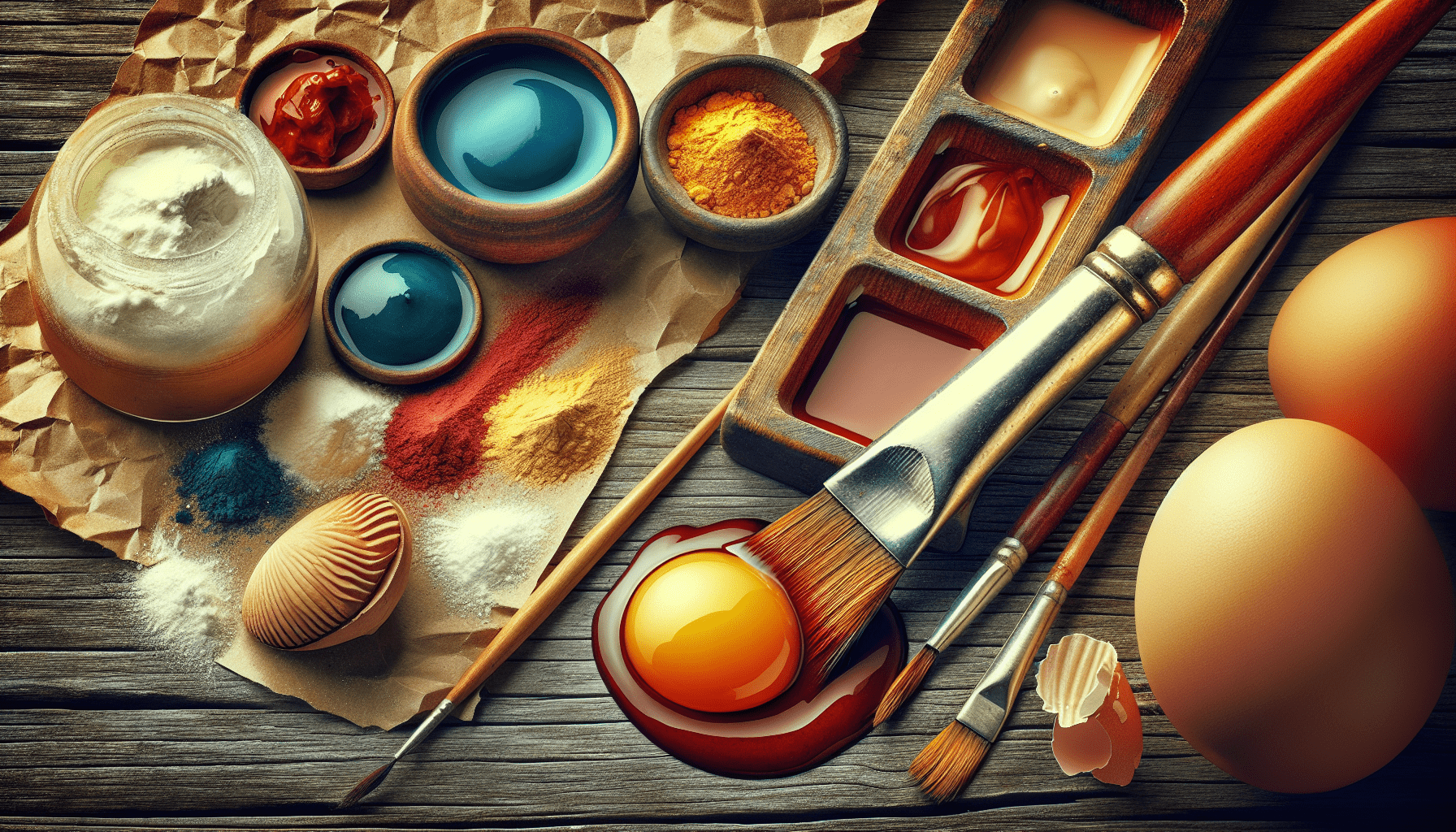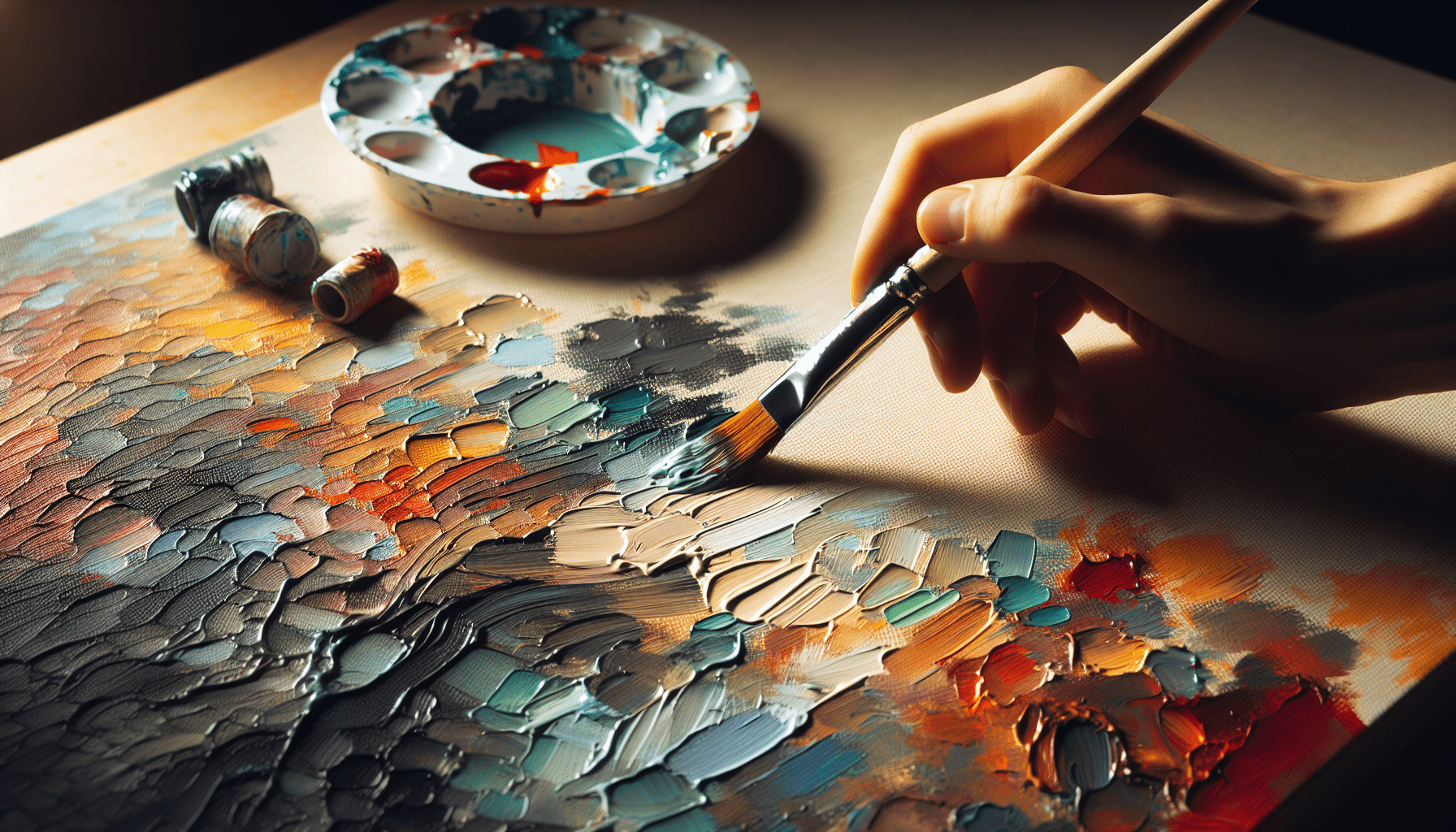Tempera paint, a popular choice for artists and crafters alike, has long been associated with a particular ingredient – eggs. But is this widely held belief accurate? In this informative article, we will explore the question of whether or not tempera paint actually contains eggs. By examining the traditional composition of tempera paint, the historical significance of eggs in art, and the modern alternatives available, you will gain a comprehensive understanding of this intriguing topic. So, let us uncover the truth behind the potential presence of eggs in tempera paint and explore the fascinating world of art materials.
What is Tempera Paint?
Definition
Tempera paint is a type of paint that has been used for centuries in various artistic practices. It is known for its ability to create vibrant and long-lasting colors, as well as its fast drying time. Tempera paint is composed of pigments, a binder, and a solvent. The binder in traditional tempera paint is typically egg yolk, although modern variations use other substances as well. This paint medium is commonly used on a variety of surfaces, such as wood, canvas, and even walls.
Composition of Tempera Paint
Traditional tempera paint is primarily composed of pigments, water, and a binder. The binder acts as an adhesive, binding the pigment particles together and to the painting surface. In the case of traditional egg tempera paint, egg yolk serves as the binder. The yolk provides a sticky and cohesive consistency to the paint, allowing for easy application and adhesion. Additionally, water is added to the paint mixture to achieve the desired consistency and to dilute the pigments if necessary.
Historical Significance
Tempera paint has a rich historical significance, dating back to ancient civilizations. It was widely used by Egyptian, Greek, and Byzantine artists, among others. During the Middle Ages and the Renaissance, tempera paint was one of the most popular painting mediums in Europe. It allowed artists to create intricate and detailed works of art, as well as large-scale frescoes. Some famous artworks created with tempera paint include the Byzantine mosaics at Ravenna, the frescoes of Giotto in Italy, and the early religious panel paintings of the Flemish masters.
Understanding the Role of Eggs
Eggs in Art History
Eggs have played a significant role in art history, particularly in the creation of tempera paint. The use of eggs as a binder dates back thousands of years to ancient Egypt and Greece. The egg yolk acts as a natural adhesive, allowing the pigments to adhere to the painting surface and creating a durable and long-lasting artwork. The incorporation of eggs in art extends beyond paint; eggshell has been used for decorative purposes, and even whole eggs have been used as a medium for intricate and delicate eggshell art.
Egg Tempera vs. Other Types of Paint
Egg tempera paint is distinct from other types of paint due to its unique composition. Unlike oil paints, which use oil as a binder, and acrylic paints, which use a polymer emulsion, egg tempera relies on the natural adhesive properties of egg yolk. This results in a different texture, drying time, and overall appearance. Compared to watercolors, tempera paint offers greater opacity and the ability to create more distinct brushstrokes. However, it is not as fluid or forgiving as watercolor, making it better suited for detailed and controlled work.
Egg as a Binder in Tempera Paint
The use of eggs as a binder in tempera paint offers several advantages. Egg yolk contains a protein called albumen, which has adhesive properties and prevents the pigments from washing away or flaking off. The natural emulsifiers present in egg yolk also help to create a smooth and creamy consistency in the paint. Additionally, eggs provide a unique luminosity to the colors, enhancing their vibrancy and richness. However, it is worth noting that egg tempera paint may not be as flexible or durable as other types of paint, making it more prone to cracking or damage over time if not properly cared for.

Modern Variations of Tempera Paint
Egg-Free Alternatives
While traditional egg tempera paint remains popular among artists, there are also egg-free alternatives available on the market. These alternatives are often preferred by those with allergies to eggs or by vegans who prefer not to use any animal products in their artwork. Instead of egg yolk, these paints utilize synthetic binders, such as acrylics or gum arabic, to achieve a similar consistency and adhesion. These egg-free temperas offer artists a wider range of colors, textures, and drying times, without sacrificing the versatility and vibrancy associated with tempera paint.
Commercially Available Tempera Paints
For artists who prefer the convenience of pre-made paint, there are various commercially available tempera paints on the market. These paints can be found in both liquid and solid forms, such as cakes or sticks. Commercial tempera paints typically come in a wide range of colors and offer excellent coverage and opacity. They are popular among art educators, students, and recreational painters due to their affordability, versatility, and ease of use. However, it is important to note that these commercially available tempera paints may contain synthetic binders and additives, which can affect the overall quality and characteristics of the paint.
Considerations for Vegans or Allergies
Artists who follow a vegan lifestyle or have allergies to eggs need to be mindful of the ingredients used in the tempera paint they choose. While traditional egg tempera paint uses egg yolk as a binder, there are alternatives available that do not contain any animal products. Additionally, commercially available tempera paints often provide information regarding their ingredients, allowing artists to make informed choices. It is essential to read product labels carefully and research brands that align with specific dietary or allergy requirements to ensure a suitable and ethical choice of tempera paint.
Exploring Traditional Egg Tempera Paint
Ingredients and Preparation
The preparation of traditional egg tempera paint involves a few key ingredients: pigments, egg yolk, water, and occasionally a small amount of vinegar or alcohol. The pigments, which can be natural or synthetic, are finely ground powder substances that provide color to the paint. To prepare the paint, the pigments are mixed with a small amount of egg yolk and water to create a paste-like consistency. The addition of vinegar or alcohol acts as a preservative, preventing the growth of bacteria in the paint. The resulting mixture is honed and diluted with water as needed, ready for application.
Advantages and Characteristics
Traditional egg tempera paint offers several advantages and distinct characteristics that make it a preferred choice for many artists. The use of egg yolk as a binder provides excellent adhesion and durability, ensuring that the paint adheres well to the painting surface and remains vibrant over time. The texture and consistency of egg tempera paint allow for precise brushwork and fine details, making it especially suitable for detailed and intricate artworks. Additionally, egg tempera paint dries quickly, allowing for multiple layers to be applied in a short period and minimizing the risk of color mixing or smudging.
Historical and Cultural Significance
The historical and cultural significance of traditional egg tempera paint cannot be overstated. This medium has been utilized by countless artists throughout history and across cultures. From the religious icon painters of the Byzantine era to the Renaissance masters and beyond, egg tempera paint has played a vital role in the creation of iconic works of art. The labor-intensive and meticulous process of creating egg tempera paintings has often been associated with devotion, technical skill, and attention to detail. The beauty and luminosity of egg tempera pigments continue to captivate artists and art enthusiasts alike, preserving the cultural legacy of this ancient painting technique.

Benefits and Limitations of Egg Tempera Paint
Vibrant Colors and Longevity
One of the primary benefits of using egg tempera paint is the vibrant and long-lasting colors it produces. The pigments in egg tempera paint exhibit exceptional color intensity and luminosity, resulting in rich and vibrant artworks. Unlike other mediums, such as oil paints, the colors in egg tempera do not fade significantly over time, ensuring the longevity and preservation of the artwork’s original hues. This characteristic is particularly advantageous for artists seeking to create vivid and visually stunning paintings that maintain their brilliance for years to come.
Fast Drying Time
Another notable benefit of egg tempera paint is its fast drying time. Unlike oil paints, which can take days or even weeks to dry, egg tempera dries quickly and forms a hard and durable surface. This enables artists to work efficiently and build up layers of paint in a relatively short period. The quick drying time also minimizes the risk of smudging or color bleeding, allowing for precise details and crisp brushwork. However, it is important to note that the fast drying nature of egg tempera paint can also pose challenges, as artists must work swiftly to achieve the desired effects before the paint dries.
Potential for Cracking
Despite its many advantages, egg tempera paint does have some limitations. One of the primary concerns for artists working with this medium is the potential for cracking. Egg tempera paint dries to a hard and brittle finish, which can make it more susceptible to cracking, especially if the paint layer is thick or not properly applied or prepared. Artists must take precautions to ensure that the painting surface is well-prepared and that the paint layers are applied thinly and evenly to reduce the risk of cracking. Additionally, proper storage and framing of egg tempera artworks are crucial to minimize potential damage and preserve their integrity.
Compatibility with Other Media
Egg tempera paint is highly compatible with various other media, allowing artists to explore different techniques and achieve unique effects. For instance, egg tempera can be used in conjunction with gold leaf or other metallic foils to create intricate and decorative details. It can also be combined with other painting mediums, such as oil or acrylic, to achieve hybrid techniques or mixed media artworks. The compatibility of egg tempera with other media provides artists with endless possibilities for experimentation and creative expression.
Application and Techniques
Substrate Preparation
Proper preparation of the painting substrate is essential when working with egg tempera paint. The substrate, which can be wood, canvas, or any other suitable surface, must be adequately primed to ensure proper adhesion and longevity of the artwork. For wood panels, a traditional gesso made with rabbit skin glue and chalk is commonly used. On canvas, a suitable sizing material is applied prior to the gesso to prevent the paint from deteriorating the fabric. Substrate preparation is a critical step in the process and should not be overlooked to achieve optimal results when working with egg tempera.
Brush Techniques
Brush techniques play a crucial role in achieving desired effects and textures in egg tempera painting. Due to the quick-drying nature of the paint, brushwork must be deliberate and precise. Thin and even layers of paint are typically applied using small, soft brushes. Artists often utilize cross-hatching, stippling, or glazing techniques to create texture, depth, and dimension in their artworks. Careful consideration should be given to developing a mastery of brush techniques to fully harness the potential of egg tempera paint and achieve the desired visual impact.
Layering and Glazing
Layering and glazing techniques are commonly used in egg tempera painting to build up colors and create depth and luminosity. Artists can apply multiple thin layers of paint, allowing each layer to dry before adding the next one. This layering process allows for the gradual buildup of colors and tones, resulting in vibrant and harmonious compositions. Glazing, which involves applying transparent layers of paint over dry layers, can enhance the luminosity of the colors and create subtle variations in hue. These techniques require precision and patience but can yield stunningly beautiful results when executed skillfully.
Building Up Textures
Egg tempera paint allows artists to experiment with various techniques to create textures and tactile elements in their artworks. Artists can build up textures by adding different substances to the paint mixture, such as sand, powdered marble, or ground pigments. These additives create a gritty or granulated texture that adds visual interest and depth to the painting. Artists can also use scraping or scratching techniques to create texture or reveal underlying layers of paint. The ability to build up textures in egg tempera offers artists a wide range of creative possibilities and allows for the exploration of tactile elements on a two-dimensional surface.
Preservation and Conservation
Temporary and Permanent Fixes
When working with egg tempera paint, artists may encounter situations where temporary or permanent fixes are necessary. Temporary fixes involve addressing minor issues in the artwork, such as small cracks or flaking paint, to prevent further damage until a permanent restoration can take place. These fixes can often be achieved using reversible conservation materials, such as conservation-grade adhesive or fillers. Permanent fixes, on the other hand, involve more extensive repairs or restorations that may be necessary to stabilize or enhance the artwork. These fixes should be carried out by professional conservators to ensure the longevity and integrity of the artwork.
Storage and Display Considerations
Proper storage and display considerations are crucial for preserving the quality and longevity of egg tempera artworks. Paintings should be stored in a climate-controlled environment with stable humidity and temperature levels to prevent moisture damage or rapid deterioration. When displaying egg tempera paintings, it is essential to avoid direct sunlight or exposure to intense light sources, as this can cause fading or discoloration of the pigments over time. Framing the artworks with appropriate archival materials, including acid-free mats and UV-protective glazing, can further protect them from environmental factors and ensure their longevity.
Cleaning and Restoration
Over time, egg tempera paintings may require cleaning or restoration to maintain their visual appeal and integrity. Cleaning methods for egg tempera artworks must be gentle and non-invasive to avoid causing damage to the delicate paint layers. Professional conservators utilize specialized techniques and materials, such as solvent gels or poultices, to safely remove dirt, grime, or varnish layers without affecting the underlying paint. Restoration of egg tempera paintings involves repairing damaged areas, stabilizing paint layers, and reintegrating missing or deteriorated sections. These processes require the expertise of trained conservators to ensure the preservation of the artwork’s original appearance and historical significance.
Famous Artists and Works in Egg Tempera
Pre-Renaissance Masters
Egg tempera paint has been used by numerous famous artists throughout history, including many pre-Renaissance masters. Artists such as Cimabue, Duccio, and Simone Martini utilized egg tempera extensively in their religious panel paintings, creating highly detailed and luminous artworks. These early masters exemplified the exceptional technical skill and innovative techniques that could be achieved with egg tempera.
Italian Renaissance Icons
During the Italian Renaissance, egg tempera reached new heights of popularity and innovation. Artists such as Fra Angelico, Botticelli, and Piero della Francesca incorporated egg tempera paint into their masterpieces, showcasing the medium’s ability to create intricate details and vibrant colors. Notable works created with egg tempera during this period include Fra Angelico’s “Annunciation” and Botticelli’s “The Birth of Venus.”
Modern and Contemporary Artists
While less common in contemporary art practice, some modern and contemporary artists have embraced egg tempera paint for its unique qualities and historical significance. Artists like Andrew Wyeth and Betsy Eby have utilized egg tempera in their works, experimenting with its possibilities and pushing the boundaries of the medium. These artists demonstrate that egg tempera paint continues to have a place in the art world, offering a distinct and captivating aesthetic.
Educational and Recreational Uses of Tempera Paint
Exploring Tempera Paint in Schools
Tempera paint is widely used in educational settings, particularly in schools and art programs. Its ease of use, affordability, and vibrant color options make it an ideal medium for young artists to explore painting techniques and color theory. Additionally, tempera paint is water-based and non-toxic, making it safe for children to use. Its quick drying time allows for immediate display or handling, further enhancing the educational experience and sense of accomplishment for young students.
Craft Projects and DIY Ideas
Beyond educational contexts, tempera paint is a popular choice for various craft projects and do-it-yourself (DIY) ideas. Its versatility and ease of use make it suitable for a wide range of applications, from decorating Easter eggs to creating handmade greeting cards or personalized artworks. Tempera paint can be used on a variety of surfaces, including paper, cardboard, and even fabric. Whether for recreational crafting or artistic expression, tempera paint offers a fun and accessible medium for individuals of all ages and skill levels.
Art Therapy and Mindfulness
Tempera paint has also found applications in therapeutic settings and mindfulness practices. The act of painting with tempera can be a calming and meditative experience, allowing individuals to tap into their creativity, express their emotions, and explore art as a form of self-expression. The vibrant colors and tactile nature of the medium can contribute to a sense of joy and relaxation, making it a valuable tool for art therapists, counselors, and individuals seeking personal growth and mental well-being.
Conclusion
Final Thoughts
Tempera paint, with its historical significance and unique qualities, continues to captivate artists and art enthusiasts alike. From its traditional use of egg yolk as a binder to modern variations that accommodate different dietary choices and allergies, tempera paint offers a wide range of possibilities and creative exploration. Its vibrant colors, fast drying time, and compatibility with other media make it an attractive choice for artists seeking precision, luminosity, and depth in their artworks.
Versatility and Personal Preference
While tempera paint may not be as widely used today as oil or acrylic paints, it remains a significant medium in the art world. Artists continue to experiment with and embrace tempera paint for its distinct visual characteristics and historical allure. Whether painting in the traditional style with egg yolk as a binder or exploring alternative formulas, the versatility and personal preference of tempera paint continue to make it a valuable and relevant choice for artists of all backgrounds and artistic styles.
Continued Relevance in the Art World
The continued use of tempera paint by contemporary artists, as well as its inclusion in educational settings and therapeutic practices, speaks to its enduring relevance in the art world. The combination of its vibrant colors, fast drying time, and historical significance make it an appealing medium for artists seeking unique and visually striking results. Whether used for detailed and precise works, experimenting with textures and layering, or as a starting point for artistic exploration, tempera paint continues to contribute to the rich tapestry of artistic expression.



